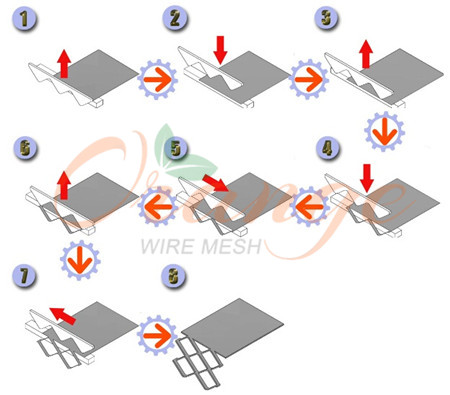Expanded metal is a versatile material used in various applications, including fencing, grating, walkways, filters, and decorative elements. Here is a description of the typical processing steps involved in manufacturing expanded metal:
Material Selection: Choose the appropriate material for the expanded metal based on the application requirements. Common materials include stainless steel, carbon steel, aluminum, and other alloys. Consider factors such as strength, corrosion resistance, weight, and aesthetics.
Metal Preparation: The selected metal is typically in the form of a sheet or coil. It may undergo preparation steps such as cleaning, leveling, and cutting to the desired dimensions. This ensures the metal is free from contaminants and has a uniform thickness.
Slitting (Optional): If the metal is in coil form, it can be slit into narrower strips. Slitting involves cutting the coil along its length to create smaller-width strips that will be used for expanded metal production. Slitting may be performed before or after the metal has been expanded, depending on the specific manufacturing process.
Expansion Process: The expansion process is the core step in manufacturing expanded metal. It involves simultaneously slitting and stretching the metal sheet to create a mesh-like pattern with diamond-shaped openings. The metal sheet is fed into an expanding machine equipped with serrated blades. The blades make cuts at regular intervals and the sheet is then stretched in a controlled manner, causing it to expand and form the characteristic diamond-shaped openings.
Flattening: After expansion, the expanded metal sheet may undergo flattening to achieve a more uniform surface and thickness. This is typically done using a roller or flattening machine that presses the expanded metal sheet between rollers to flatten it.
Cutting and Shaping: The expanded metal sheet can be cut or shaped according to the desired dimensions or specific applications. This may involve shearing the sheet into smaller sizes or using other cutting methods to create custom shapes or profiles.
Inspection and Quality Control: The expanded metal is thoroughly inspected to ensure it meets the required specifications. This includes visual inspections for any defects or irregularities in the expanded pattern, measurements of the strand width, mesh size, and thickness, and quality control checks to ensure the overall quality of the product.
Surface Treatment (Optional): Depending on the application and material used, the expanded metal may undergo surface treatments such as cleaning, coating, or plating to enhance corrosion resistance, improve aesthetics, or provide additional functionalities.
Packaging and Delivery: Once the expanded metal passes the quality control checks and any additional processing steps, it is properly packaged to protect it during transportation. The expanded metal sheets or components are then shipped to customers along with any necessary installation instructions or documentation.
